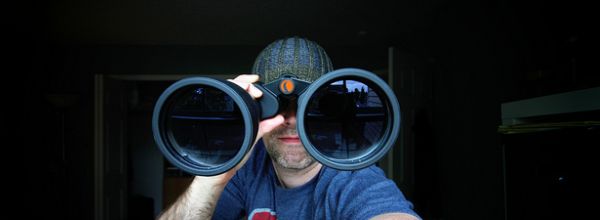For those of you who prepare your own DNA libraries, this article will cover the most critical aspects of library preparation to ensure a successful sequencing run. Previous Bite Size Bio articles have covered the basics of how 454 sequencing works, so give those a quick review if you are unfamiliar with the process. This video is also highly recommended.
Short pieces of DNA
Short pieces of DNA left over from the library prep process can interfere with the emulsion PCR. Small products bind to the capture bead preferentially, competing with the binding of the template. These short fragments can be primer dimers or other products created due to non-specific binding of the DNA polymerase during any PCR step of the library prep process.
Run as far as you can
Removing small products is no trivial undertaking. Be sure to read James’ Top Tips to help you run your gels consistently. It is also important to run your gels out as long as possible to achieve good separation of bands. Sometimes, primer dimers can still be left behind in the final product even after the gel so other methods, such as the Agencourt AMPure Bead clean-up, may be necessary to remove straggling primer dimers.
Looking for the small products
If you don’t have access to an Agilent Bioanalyzer, you can run a small amount of each library on a polyacrylamide gel to check for the presence of small products. Because polyacrylamide gels are thinner, they tend to achieve better resolution than agarose gel. Consequently, smaller amounts of DNA may be visible there. If small products appear on the polyacrylamide gel, try another AMPure Bead clean-up. It is also possible to perform your size selection using polyacrylamide gel to begin with, if you can find a good PAGE isolation protocol.
Low quality libraries
A low quality library is one that will not sequence well. The DNA may be damaged in some way or may contain contaminants. This is an elusive problem and one of the most frustrating! If you have a library that you know sequences well, you can use that as a quality control to determine if your problem is the library or something with the sequencing chemistry (PhiX is an example of a control used in Illumina platforms.) Regenerating the libraries may be the only solution.
The adapters were not successfully ligated
It is possible that your adapter ligation step is not working properly. Without the sequencing adapters, the template will not be able to bind to the capture bead. The sequencing primers, which contain the adapter sequence, will have nowhere to sit in order to lengthen the strand.
Are the adapters present?
A few methods can be used to determine if the adapters are present. A polyacrylamide gel can be run in order to determine if the band is the correct size. You should know what size your amplicon or fragment is as well as the length of the adapters, barcodes, and the ‘TCAG’ key. If you notice that your library is shorter than expected, one possibility is that the adapters are missing.
Checking adapters with PCR
A more certain way to determine if adapters are present is to use PCR or qPCR. Obtain a forward PCR primer that binds to the A adapter and a reverse PCR primer that binds to the B adapter. Run a PCR or qPCR of your library and a 1:10 dilution of your library. For regular PCR, measure the concentration of the results. For the qPCR, the exact copy number should be given in the output.
Clean band equals the presence of adapters
Given the final amount, if your dilution is still roughly one tenth of your library, proceed to run these products out on a gel. If you get a clean band of the correct size, then you can assume that the adapters are present and were added efficiently.






